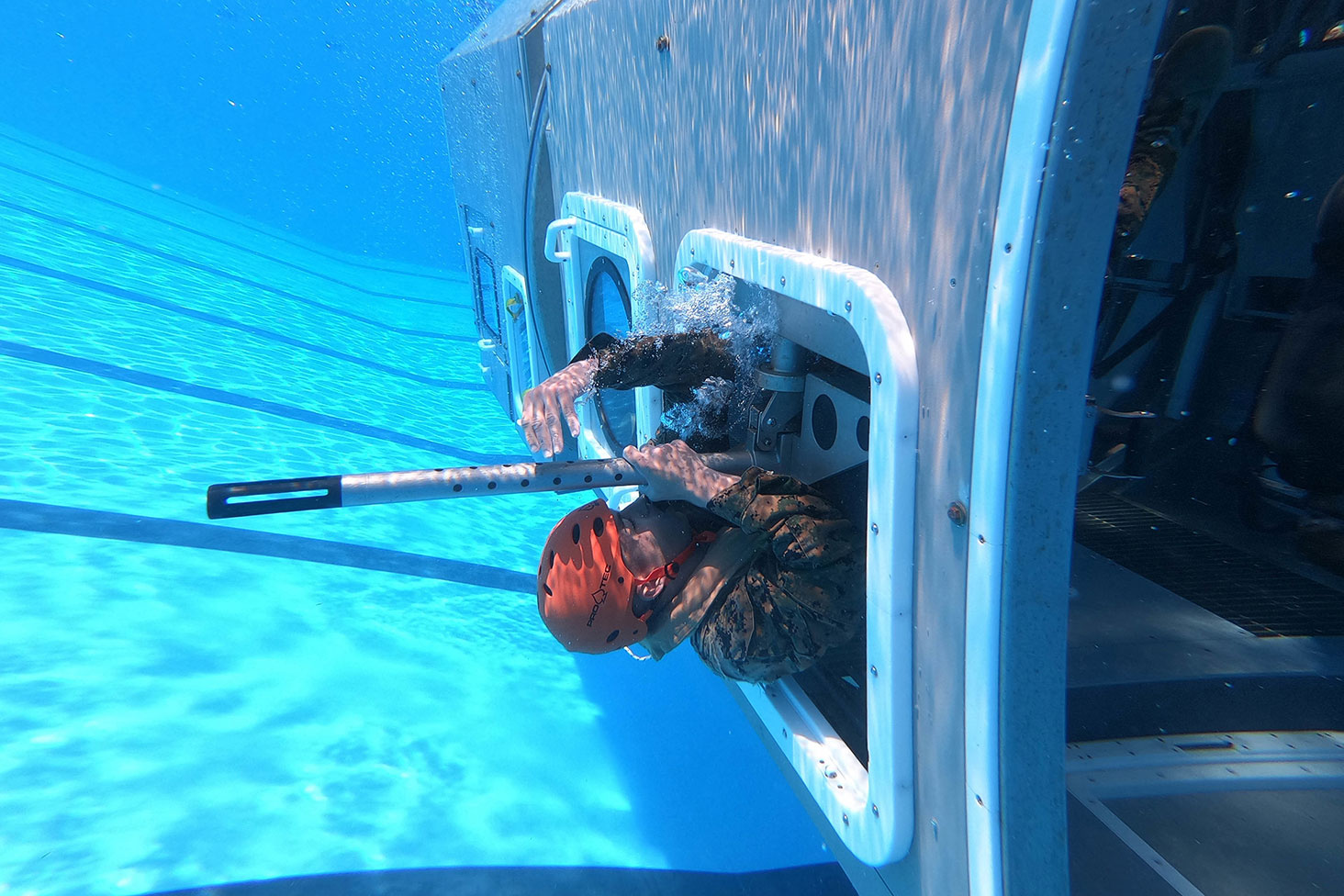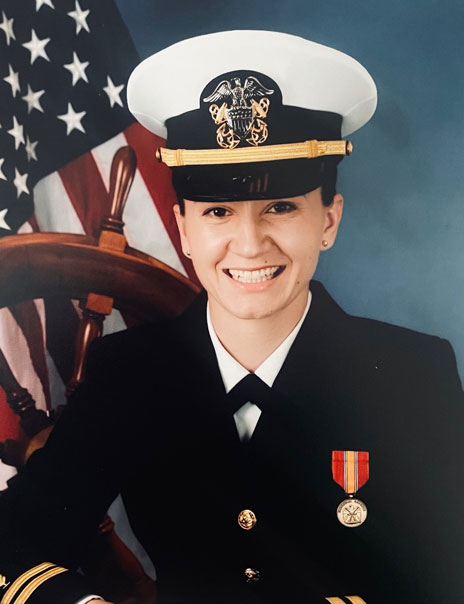
Pilot Psychology: NREIP Alumna Takes Her Skills to the Skies to Help Navy Pilots Fly Safely and Comfortably


Dr. Kaila Vento climbed into the helo dunker, buckled in, and got ready to get drenched. This was the researcher’s world now even if her PhD hadn’t prepared her for the experience of being dunked into a pool while strapped into a helicopter simulator used to train Naval flight trainees – like Vento – to escape in the event of a water crash.
Spoiler alert: She made it out.
“It was pretty unnerving before getting in,” she says now. “My heart was racing, and I was hyper-focused on remembering all the procedures needed to egress safely. Overall, it was very challenging mentally and physically, but the sense of accomplishment I felt afterward was so rewarding.”
Dr. Vento is on active duty in the Navy and the helo dunker is part of her flight training. She’s not a Naval pilot but rather a member of an even more exclusive club known as Aerospace Experimental Psychologists, a group of specialized scientists studying the impact flying high and at high-g has on the mind and body.
“At a few dozen of us, it’s a pretty small community,” she notes.
As far back as high school, Vento knew she wanted to serve in the U.S. military, not knowing which branch it would be. However, she was also interested in science and research so first attended Winona State University where she gradated with a degree in Psychology. Later she earned a master’s in Kinesiology and Sport and Exercise Psychology from California State University in Long Beach and then a PhD in Exercise and Nutritional Sciences at Arizona State University.
Along the way, she did two internships through the Naval Research Enterprise Internship Program (NREIP), both at the Naval Medical Research Unit in Dayton, Ohio (NAMRU-D). It was there she discovered Aerospace Experimental Psychology and thereby how she would marry her love for research and her desire to serve.
“I did a very basic Google search when I found NREIP,” she recounts. “I saw it as an opportunity to get some exposure and experience that would help me become a more competitive candidate to become an active-duty uniform scientist. But it really wasn’t until I actually was an intern that I decided what I specifically wanted to do.
Knowing she planned become an active duty but not knowing which field, her mentor, Dr. Kara Blacker, went about putting her in touch with uniform scientists in various areas including research physiology community, research psychology, aerospace and operational physiology and, of course, aerospace experimental psychology.
“She and NREIP really played a huge role in helping me not just become a commissioned officer, but ultimately deciding where I wanted to pursue my career in the Navy,” Vento says.
While at NAMRU-D, Vento helped Blacker study hypoxia, a lack of oxygen in the blood that can impair pilots who fly at altitude which then affects their cognition, a daunting problem for someone flying a complex, high-tech jet. Particularly, they were interested in how long it takes someone to recover after a hypoxic exposure and how they might be able to recover faster.
Vento was also able to use her specialized knowledge, applying what she knew about hydration – and the problems with dehydration – in athletes to pilots. This included what happens if there aren’t adequate options for bladder release, another daunting problem for pilots how can spend hours in the air.
Blacker found Vento’s expertise invaluable.
“She knew more than us on techniques to measure and address hydration,” Blacker explains. “So, it was a very mutually beneficial collaboration between us because I was able to teach her more of the psychology and the neuroscience pieces of the work we were doing, and she was able to teach me and the rest of our team more of the hydration side of it.”
It might not occur to many research scientists to join the military. For Vento it was a lifelong dream, and she was also inspired by her husband who also served in the Navy.
But she argues that the benefits of active duty are significant and offers opportunities for acquiring leadership skills that can help researchers advance more quickly in their careers even if their future is in academia or private research.
“Becoming a department head is something that you wouldn't be able to accomplish very quickly as a young investigator coming out of a PhD,” she explains. “I chose the military to really hone and challenge my skills in ways I probably wouldn't get to in an academic setting. This would certainly give you a more advantageous look on your curriculum vitae when you apply for those positions so it could be an excellent steppingstone if someone wanted to go back into academia to seek out a professorship.”
Plus, she says, she will have the opportunity to work with a much wider and more diverse group of scientists, not just those from the Navy but the other branches as well.
Vento, however, is in it for the duration and has no plans to go back to civilian life after her four-year commitment is up.
“I want to give back the knowledge, the skills, the mentoring that I have gained throughout my years and utilize my scientific background. I had a wonderful experience serving as a military spouse so I want to improve life for our active-duty members and their families,” she says, adding she hopes that might be back at the place it all began, NAMRU-D and with her mentor, Dr. Blacker.
Blacker says she looks forward to that possibility but that, wherever Vento goes, she’s sure that she’ll do great.
“She’s dedicated, she's hardworking, and she's a brilliant scientist,” Blacker says. “I think she has everything she needs to do really great things in that position because to be an AEP, you need to be a good scientist and a good researcher, but you also need to have a well-rounded skill set of how to manage people and how to deal with adversity while also being flexible and willing to move every three years. She has all of that in spades.”